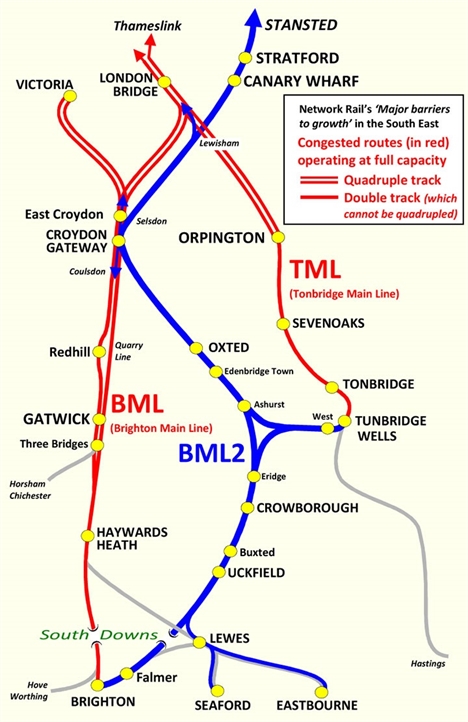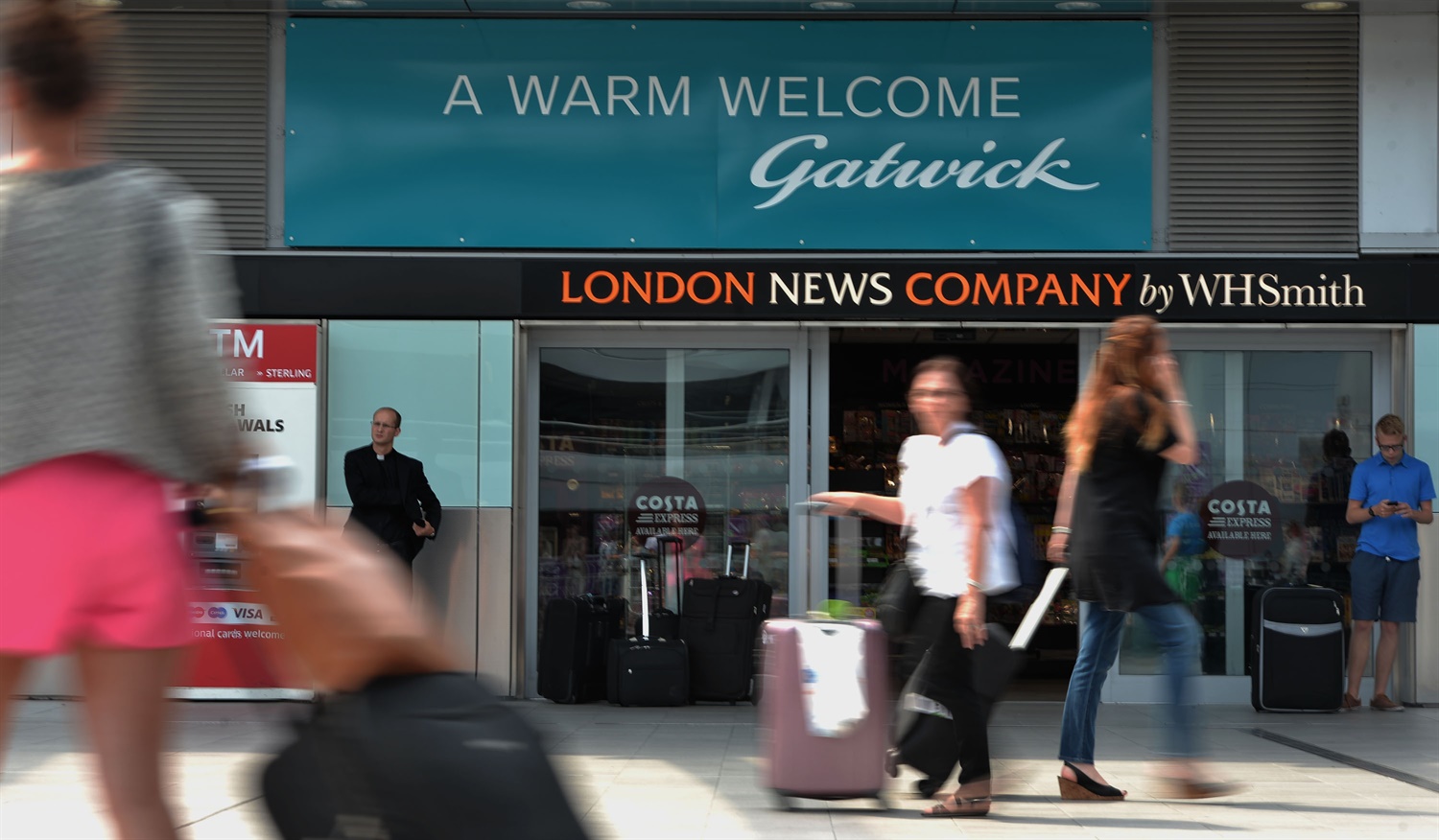14.08.15
The case for a second Brighton Main Line – BML2
Guest blog by BML2 project manager Brian Hart
London and South East commuters can take heart from the chancellor’s recent demand for a full study into a second Brighton Main Line (BML2), rather than just reopening the Lewes–Uckfield link in Sussex.
Since former transport minister Norman Baker – a particularly vociferous opponent of BML2 – was unseated, Lewes’s new MP Maria Caulfield has learned quickly, showing considerable mettle by pushing the project not only with rail minister Claire Perry, but now George Osborne.
The south east’s rail network has some particularly intractable and fundamental predicaments affecting performance, which go back many years. If it is to successfully manage ever-rising demand, then many are coming to the conclusion that it requires a project on BML2’s scale. Put simply, the problem is not the trains, but the railway and its infrastructure, to which unfortunately GTR’s (Govia Thameslink Railway’s) new Siemens Class 700 fleet will also fall victim.

Worn-out equipment, insufficient track capacity and satisfying demand remain the difficult challenges facing both industry and the government, but now there is new hope, with Osborne’s determination to look at the bigger picture. The announcement coming from the chancellor, rather than the transport secretary, shows more than anything else that BML2 is just as much about the economy as transport. It comes at a time when transport consultants are increasingly warning that Sussex will quickly grind to a halt without radical solutions, whilst central London’s congestion shows little sign of improving.
In basic terms, BML2 comprises three segments. Sussex sees the Uckfield line redoubled, electrified and reopened to the coast. One route heads into Lewes and Eastbourne, whilst TBMs create the all-important new tunnel through the South Downs. This provides the quickest and most viable secondary route possible directly into the city of Brighton & Hove.
The Kent phase reopens the main line into Tunbridge Wells from the west, thereby relieving the critical capacity ceiling imposed by insuperable Tonbridge Main Line constraints.
The London phase – also termed ‘Thameslink 2’ – is the most ambitious, but is easily the most financially rewarding. This is because TL2 creates an immeasurably valuable main line across the eastern Thames through the capital’s commercial heartland. Linking Kent, Sussex and Surrey with East Anglia, vast amounts of commuter and off-peak traffic could avoid time-wasting, expensive and frustrating central London congestion.
TL2 would employ the former Selsdon – Lewisham route, then tunnel under the Thames to emerge at Stratford International. Lewisham, Canary Wharf and Stratford would be key interchange stations, complementing Crossrail’s east-west routes.
BML2 enables fast services to avoid Croydon’s major bottlenecks, whilst a new connection across to the BML, similar to Redhill’s Quarry Line, allows all trains coming up from the south coast the ability to bypass. The value of a purpose-built interchange termed ‘Croydon Gateway’ at this location is something to be explored.
Sections of Tramlink currently using the former heavy rail route can be diverted or shared; similarly, the proposed Hayes conversion can be accommodated. London cannot afford to be ‘boxed in’ with a mere Bakerloo extension because the rail corridor is too strategic.
Gatwick’s future success depends on BML2. Irrespective of a second runway, the airport wants growth, being a major employer and contributor to the local and national economy. As Davies pointed out, its Achilles’ heel is its inadequate rail connections compared to Heathrow. For Gatwick to defend its position, TL2 is an absolute necessity; otherwise the Brighton Line will seal its fate.

Strikingly, Davies recommended Heathrow because of Crossrail’s forthcoming connections to east London. However, he didn’t mention Canary Wharf and Stratford incurs 13 station stops through congested central London. That’s hardly business class.
TL2 would trump that, particularly if the ‘Stanwick’ concept is achieved where dedicated rail/air services shuttle between Gatwick and Stansted through Canary Wharf and Stratford International, obviating many of the existing capacity problems at London termini and places such as Clapham Junction and East Croydon.
We strongly suspect the involvement of the chancellor means more than meets the eye, and believe George Osborne both realises and appreciates the economic value of BML2. To begin with, nothing else currently on the table can match the huge amount of high-peak capacity it would deliver, whilst its value to the industry, the public and the southern ‘powerhouse’ economy as a BML diversionary is inestimable.
It also goes way beyond most transport proposals by having an extremely robust business case. This is because trains on the new routes would find eager customers as they tap into new markets all along its busy and expanding corridors off-peak and weekends.
Time for BML2? Tell us what you think – have your say below or email [email protected]